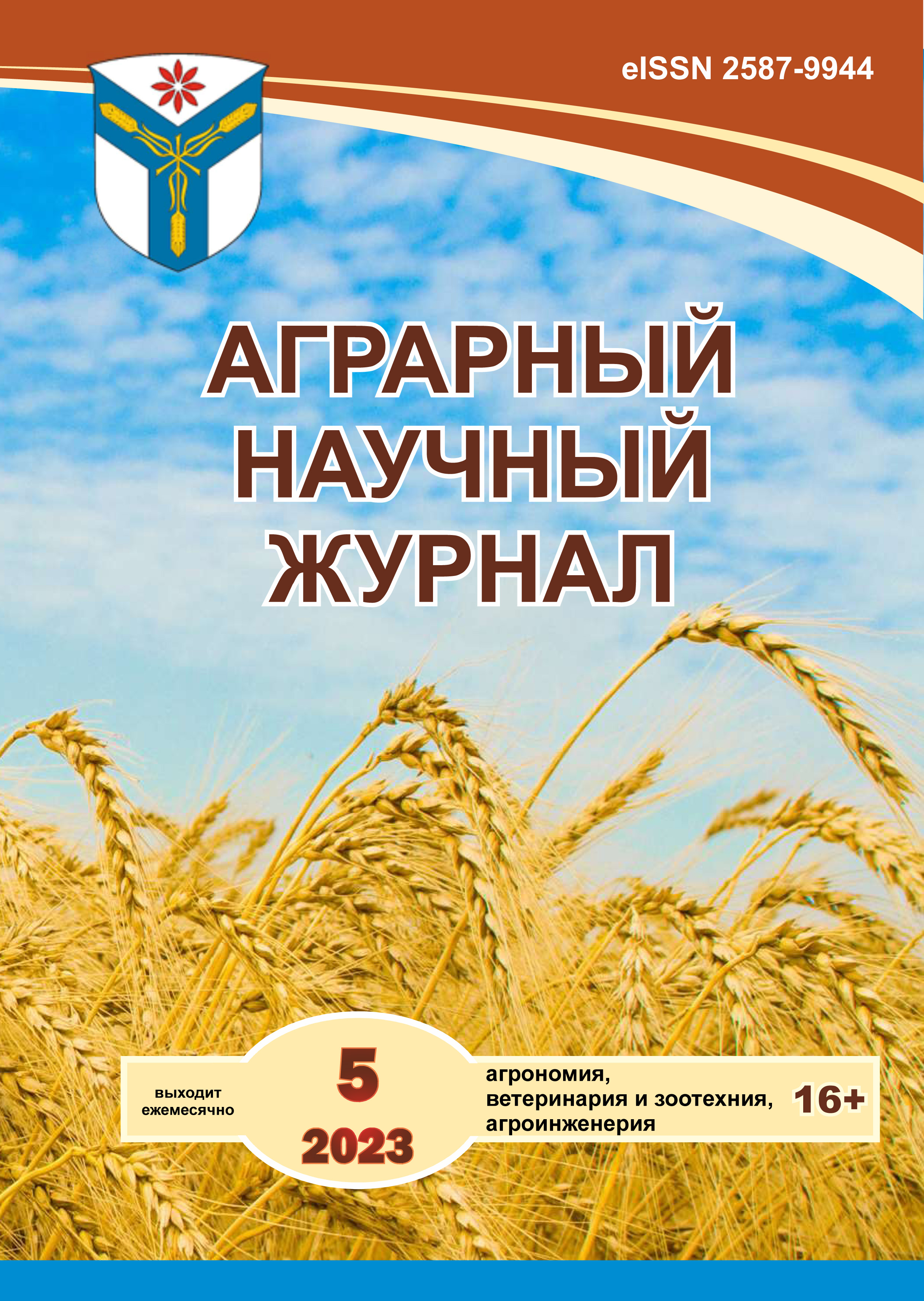Influence of diet, growth stimulators and means of protection on the productivity of milk thistle in the steppe zone of the Volga region
DOI:
https://doi.org/10.28983/asj.y2023i5pp24-32Keywords:
milk thistle, growth stimulator, mineral fertilizers, plant protection, productivityAbstract
The results of studies of milk thistle productivity depending on soil and climatic conditions, doses and timing of mineral fertilizers, microelements, growth stimulants, plant protection products are presented. It was revealed that the formation of the assimilation apparatus and biomass is directly related to the regime of mineral nutrition, the treatment of seeds, crops with growth stimulants and plant protection products. The maximum leaf area (48.0 thousand m2/ha) and dry biomass (4.8 t/ha) were in the phase of the beginning of fruit formation when fertilizers were applied at a dose of N90P90K60 (1.50 t/ha), which is higher than the control (without fertilizers) by 0.6 t/ha (40.0%). In wet years, the increase in seed yield after the application of fertilizers was 1.2–1.5 times higher compared to years characterized by drought. Various doses of fertilizers had a significant effect on the oil content: at the optimal dose (N90P90K60), it increased to 30.2%, which is 12.0% higher than in the control. The content of flavolignans at the maximum dose of fertilizers increased to 3.70%, protein - up to 23.7% compared with the control (by 2.90 and 19.1%, respectively). The apllication of the growth stimulator Gibbersib in combination with microelements (Gumat 7) against the background of mineral fertilizers contributed to more intensive growth and development of milk thistle, and also increased the germination of both laboratory and field during the entire growing season (by 5.2–8.3%) and by the time of harvesting (by 2.8–8.2%). The highest yield of milk thistle seeds (1.06 t/ha) was after application of the complex microfertilizer Humat 7 and growth stimulator, respectively, compared with the control and moderate dose.
Downloads
References
Dranik L. I., Dolganenko O. L., Grizodub O. I. Flavolignani fruit of red-flowered and biloquitted Silybum marianum. Pharmaceutical journal. 1993; 4: 83–85.
Botanical-pharmacognostic dictionary: a reference guide / under. ed. K. F. Blinova, G. P. Yakovlev. Moscow, 1990: 229–230.
Zadorozhny A. M., Koshkin A. G., Sokolov S. Ya. Handbook of medicinal plants. Moscow, 1988. 228 p.
Recommendations on the methodology for conducting observations and research in the field experience / Research Institute of Agriculture of the South-East. Saratov, 1973. 223 p.
Methods of state variety testing of agricultural crops. Moscow, 1971. 233 p.
Nogtev V. P. New quantitative-analytical and physiological indicators of xeromorphism and hygromorphism of plants. Reports of ANSSSR. 1950; 74; 1: 143–146.
Gusev N. A., Karinova F. G. Water exchange and drought resistance of plants. Development of theoretical and experimental studies in the fight against drought. Stavropol, 1982: 78–79.
Armor B. A. Methods of field experience. Moscow, 1985: 35–112.
Melnikova T. M. Features of seed germination of milk thistle. Introduction of non-traditional and rare agricultural plants. Penza, 2000; 2: 97–98.
Nichiporovich, A.A., Photosynthesis and the theory of obtaining high yields. Moscow, 1966. 48 p.
Pimenov K. S. On the effectiveness of agrotechnical methods of weed control at the main stages of soil preparation for sowing medicinal herbs. Moscow, 2000: 341–348.
Pimenov K. S., Zagumennikov V. B., Klimakhin G. I. Prospects for growing medicinal plants under irrigation. Medicinal plant breeding. Moscow, 2000: 285–291.
Pimenov K. S., Melnikova G. V. Pests of milk thistle and measures to combat them. Genetic resources of medicinal and aromatic plants. Moscow, 2001: 348.
Pimenov K. S. Biological bases of cultivation of medicinal plants in the Middle Volga region. Moscow, 2002. 61 p.
Medler J. T. Three-year test for meadow spittlebug control in alfalfa. J. Econ. Entomol. 1955; 5: 47.
Medler J. T., Brooks G. N. Insect control in relation to alfalfa seed production in Central Wisconsin. J. Econ. Entomol. 1957; 3: 50.
Downloads
Published
Issue
Section
License
Copyright (c) 2023 The Agrarian Scientific Journal

This work is licensed under a Creative Commons Attribution-NonCommercial-NoDerivatives 4.0 International License.








